
Riviera Maya: A Tropical Paradise on the Yucatán Peninsula
Discover the Riviera Maya: Mexico's Caribbean jewel with stunning beaches, ancient ruins, and endless adventure in the heart of the Yucatán Peninsula.
The Riviera Maya is a stunning stretch of Caribbean coastline on Mexico’s northeastern Yucatán Peninsula. Known for its crystal-clear waters, powdery white sand beaches, and vibrant coral reefs, this destination is a paradise for beach lovers and adventure seekers alike. Whether you choose to relax under a swaying palm tree or dive into the turquoise waters to explore the abundant marine life, the Riviera Maya offers a perfect escape from everyday life. One of the highlights of the Riviera Maya is the ancient Mayan ruins that dot the region. The most famous of these is Tulum, a walled city perched dramatically on a cliff overlooking the sea. Here, you can wander among the remnants of temples and palaces while enjoying breathtaking ocean views. For a deeper dive into history, visit Cobá, where you can climb the tallest pyramid in the Yucatán and imagine the grandeur of the ancient civilization that once thrived here. Adventure enthusiasts will find no shortage of activities in the Riviera Maya. The region is home to numerous eco-parks offering zip-lining, cave diving, and snorkeling among cenotes—natural sinkholes filled with fresh water. Xcaret, Xel-Há, and Xplor are among the most popular parks where you can immerse yourself in both nature and culture. After a day of adventure, treat yourself to local culinary delights, from fresh seafood to traditional Yucatán dishes like cochinita pibil and ceviche.
Local tips in Riviera Maya
- Visit early in the morning to avoid crowds at popular ruins like Tulum and Cobá.
- Bring eco-friendly sunscreen to protect the coral reefs while snorkeling and diving.
- Rent a car for flexibility in exploring remote beaches and less accessible attractions.
- Stay hydrated and wear light, breathable clothing to handle the tropical climate.
- Learn a few basic Spanish phrases to enhance your interactions with locals.
- Check the weather forecast and plan your activities accordingly, especially during the rainy season.
Riviera Maya: A Tropical Paradise on the Yucatán Peninsula
The Riviera Maya is a stunning stretch of Caribbean coastline on Mexico’s northeastern Yucatán Peninsula. Known for its crystal-clear waters, powdery white sand beaches, and vibrant coral reefs, this destination is a paradise for beach lovers and adventure seekers alike. Whether you choose to relax under a swaying palm tree or dive into the turquoise waters to explore the abundant marine life, the Riviera Maya offers a perfect escape from everyday life. One of the highlights of the Riviera Maya is the ancient Mayan ruins that dot the region. The most famous of these is Tulum, a walled city perched dramatically on a cliff overlooking the sea. Here, you can wander among the remnants of temples and palaces while enjoying breathtaking ocean views. For a deeper dive into history, visit Cobá, where you can climb the tallest pyramid in the Yucatán and imagine the grandeur of the ancient civilization that once thrived here. Adventure enthusiasts will find no shortage of activities in the Riviera Maya. The region is home to numerous eco-parks offering zip-lining, cave diving, and snorkeling among cenotes—natural sinkholes filled with fresh water. Xcaret, Xel-Há, and Xplor are among the most popular parks where you can immerse yourself in both nature and culture. After a day of adventure, treat yourself to local culinary delights, from fresh seafood to traditional Yucatán dishes like cochinita pibil and ceviche.
When is the best time to go to Riviera Maya?
Iconic landmarks you can’t miss
Portal Maya
Experience the captivating Portal Maya in Playa del Carmen – a stunning monument reflecting the rich history and culture of the ancient Mayan civilization.

Zona Arqueológica de Muyil
Explore the ancient Mayan ruins of Zona Arqueológica de Muyil, a captivating archaeological site nestled in the lush jungles of Quintana Roo, Mexico.
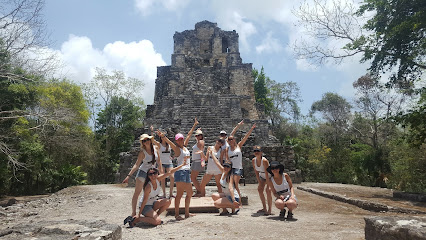
Old Lady Statue
Discover the Old Lady Statue in Playa del Carmen, a stunning landmark that beautifully encapsulates the region's rich cultural heritage and artistic spirit.

Unmissable attractions to see
Tulum
Explore Tulum: Where Ancient Mayan Ruins Meet Pristine Caribbean Beaches for an Unforgettable Travel Experience.

Paseo del Carmen Shopping Mall
Explore the vibrant Paseo del Carmen Shopping Mall in Playa del Carmen, where shopping, dining, and entertainment come together in a lively atmosphere.

Portal Maya
Discover the stunning Portal Maya in Playa del Carmen, a vibrant monument celebrating the rich Mayan heritage and Caribbean charm.

Río Secreto
Explore the stunning underground river of Río Secreto, a hidden gem near Playa del Carmen, where nature's beauty and adventure meet.
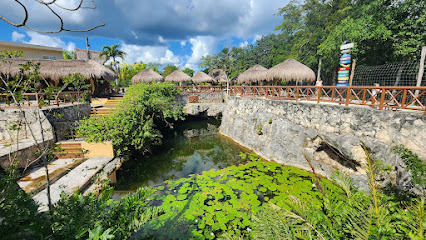
Dolphin Discovery Riviera Maya
Discover the enchanting world of dolphins at Dolphin Discovery Riviera Maya, where marine life meets adventure in stunning Caribbean surroundings.

Reserva de la Biósfera Sian Ka'an
Explore the breathtaking beauty of Reserva de la Biosfera Sian Ka'an, a UNESCO World Heritage Site in Quintana Roo, Mexico, where nature thrives in harmony.

Delphinus Xcaret
Experience unforgettable dolphin swims and exhilarating water activities in the stunning surroundings of Delphinus Xcaret, Playa del Carmen.

Dolphinaris Akumal
Experience unforgettable dolphin interactions at Dolphinaris Akumal, a top tourist attraction in the stunning Riviera Maya, Mexico.

Parque Dos Aguas
Discover the tranquil beauty of Parque Dos Aguas, a lush park in Tulum perfect for relaxation, picnics, and nature walks amidst stunning water features.

Cenote Chaak Tun
Discover the beauty and serenity of Cenote Chaak Tun, a stunning natural wonder and ecological park in Playa del Carmen, Mexico.

Mariposario de Xcaret
Experience the mesmerizing beauty of butterflies at Mariposario de Xcaret in Playa del Carmen, a stunning sanctuary showcasing nature's wonders.

Aktun Chen
Discover the enchanting beauty of Aktun Chen, an ecological park in Mexico featuring stunning cenotes and lush wildlife in a captivating natural setting.

3D Museum of Wonders
Discover a world of imagination at the 3D Museum of Wonders in Playa del Carmen, where art and reality merge in captivating optical illusions.

Delphinus Riviera Maya
Experience the magic of swimming with dolphins and enjoy thrilling water park fun at Delphinus Riviera Maya, a top destination in Playa del Carmen.

Stingray Beach Cozumel
Experience the thrill of swimming with stingrays and explore the stunning marine life at Stingray Beach, Cozumel's top aquatic attraction.

Essential places to dine
Rodizio Restaurant
Experience authentic Brazilian cuisine at Rodizio Restaurant in Riviera Maya – where flavor meets tradition in a vibrant atmosphere.

Agave
Experience authentic Mexican cuisine at Agave in Riviera Maya – where every dish tells a story of tradition and flavor.

Brasserie
Experience fine French dining at Brasserie in Riviera Maya; where culinary art meets paradise in an unforgettable setting.

Santa fe
Experience exquisite dining at Santa Fe in Playa del Carmen; where local flavors meet tropical charm within the Barceló Maya resort.

Barcelo Maya Kyoto Restaurant
Savor authentic Japanese flavors in a serene atmosphere at Barcelo Maya Kyoto Restaurant in Riviera Maya.

Restaurante Chaká
Experience exquisite family-friendly dining at Restaurante Chaká in Riviera Maya, offering delightful breakfasts amidst stunning tropical scenery.

Le Pettit Chief
Experience authentic French cuisine at Le Pettit Chief in Playa del Carmen - where elegance meets flavor in every bite.

The Traveler's Table
Experience authentic Mexican flavors at The Traveler's Table in Playa del Carmen - where great food meets breathtaking ocean views.
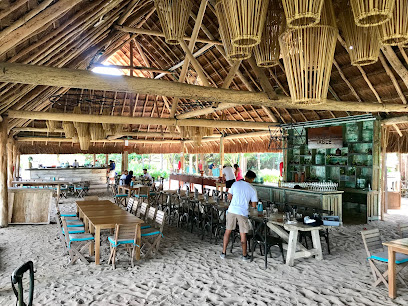
Restaurant Frida
Savor authentic Mexican flavors amidst stunning Caribbean views at Restaurant Frida in Riviera Maya.

Chiringuito at Vidanta Riviera Maya
Experience coastal dining at Chiringuito in Vidanta Riviera Maya - where fresh flavors meet stunning ocean views.

Caribe
Experience authentic Caribbean cuisine at Caribe in Riviera Maya – where every dish tells a story of tropical flavors.

Zen
Experience exquisite Asian cuisine at Zen in Puerto Aventuras, where culinary artistry meets serene ambiance.
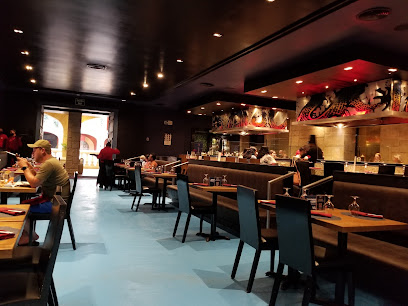
Markets, malls and hidden boutiques
Quinta Alegría Shopping Mall
Explore an eclectic mix of international and local shops, dining, and entertainment at Playa del Carmen's Quinta Alegría Shopping Mall.

Paseo del Carmen Shopping Mall
Explore the vibrant Paseo del Carmen Shopping Mall in Playa del Carmen, your ultimate destination for shopping, dining, and entertainment under the sun.

Souvenirs Playa
Discover unique local crafts and authentic mementos at Souvenirs Playa in the heart of Playa del Carmen, a must-visit for every tourist.

Playa Mart Paseo del Carmen zum zum
Discover Playa Mart, a vibrant gift shop in Playa del Carmen offering unique souvenirs and local crafts that capture the spirit of the Riviera Maya.

El Mercadito
Discover unique gifts and local crafts at El Mercadito in Puerto Aventuras, where vibrant culture meets delightful shopping.

La mexicanita chic boutique
Discover unique fashion treasures at La Mexicanita Chic Boutique in Playa del Carmen, where local artistry meets vibrant style.
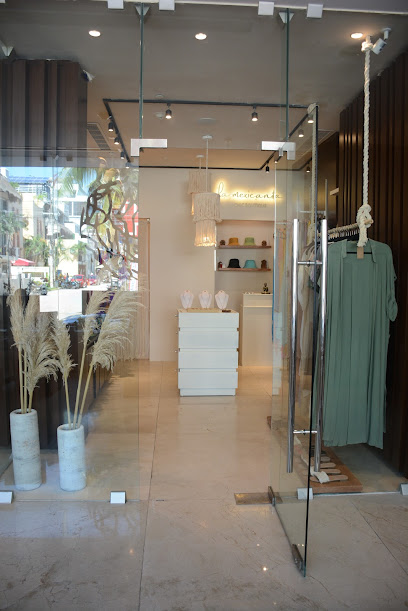
Mixik
Explore the vibrant artistry of Mexico at Mixik, Tulum's premier boutique for unique local crafts and sustainable products.

PlayaCar Hats, coverups
Explore PlayaCar Hats & Coverups for stylish hats and coverups, capturing the essence of Playa del Carmen's vibrant beach culture.

MexicArte
Explore the vibrant culture of Mexico at MexicArte, where authentic crafts and unique souvenirs await your discovery.

Barcelo Maya Palace Gift Shop
Explore the Barcelo Maya Palace Gift Shop for authentic Mexican souvenirs and crafts that capture the spirit of the Caribbean paradise.

Candle Boutique Velas artesanales cirios velas de lujo
Experience the enchanting world of artisanal candles at Candle Boutique Velas Artesanales in Playa del Carmen, where luxury meets local craftsmanship.
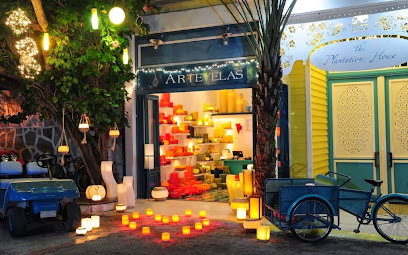
Camelia Boutique
Explore Camelia Boutique in Puerto Aventuras for unique souvenirs, local crafts, and everyday essentials in a charming coastal setting.
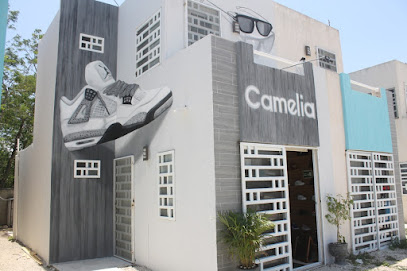
BAOBAB DECO BOUTIQUE
Explore Baobab Deco Boutique in Playa del Carmen for unique gifts, handcrafted art, and a taste of local creativity.

Rock Shop
Explore Rock Shop in Quintana Roo for a unique blend of clothing, convenience, and grocery shopping in a vibrant atmosphere.

MAYAN OOK
Discover the essence of Mexican craftsmanship at Mayan Ook, a unique gift shop in Playa del Carmen offering handcrafted treasures and authentic souvenirs.
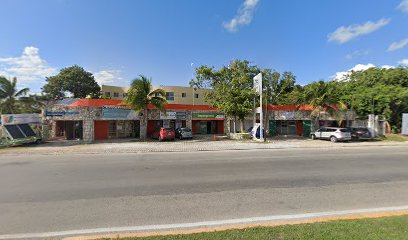
Essential bars & hidden hideouts
Mamita's Beach Club
Experience the vibrant atmosphere of Mamita's Beach Club, where sun-kissed beaches meet delicious cuisine and thrilling entertainment in Playa del Carmen.

Batey Mojito and Guarapo Bar
Experience the vibrant nightlife and refreshing cocktails at Batey Mojito and Guarapo Bar in the heart of Tulum.

Fusion Beach Bar Cuisine
Experience the vibrant flavors of local and international cuisine at Fusion Beach Bar Cuisine in Playa del Carmen, a perfect beachside dining escape.

The Pub
Discover The Pub in Puerto Aventuras - your go-to spot for delicious grill dishes, breakfast favorites, and live music in a vibrant atmosphere.

Dirty Martini Lounge
Discover the lively nightlife at Dirty Martini Lounge in Playa del Carmen, known for its creative cocktails and vibrant social atmosphere.

Bar Mojado Colonial
Experience the vibrant atmosphere and refreshing drinks at Bar Mojado Colonial in Quintana Roo, a perfect spot for relaxation and socializing.
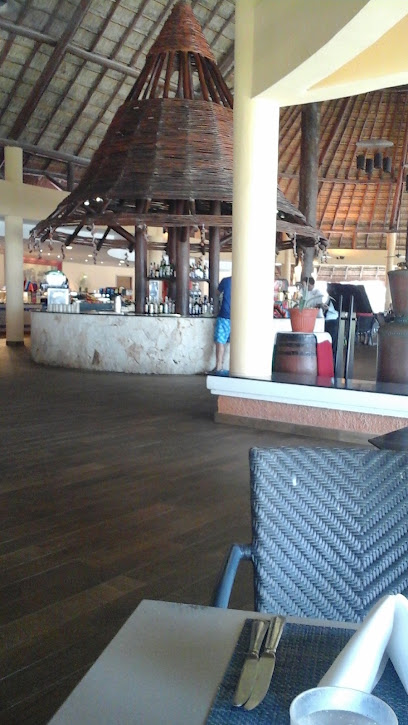
Bahia Lobby Bar
Experience the vibrant atmosphere and refreshing cocktails at Bahia Lobby Bar, a tropical retreat in the heart of Riviera Maya's Barceló resort.

Zapote Bar
Experience the vibrant flavors of Middle Eastern cuisine and refreshing cocktails at Zapote Bar, a hidden gem in the heart of Riviera Maya.
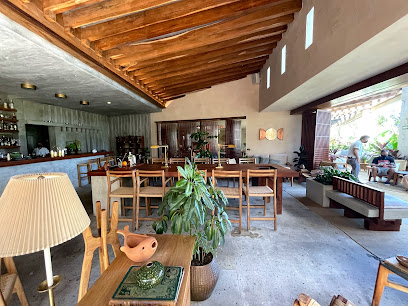
Mall bar
Discover the vibrant culinary scene at Mall Bar, where delicious grilled dishes and a lively atmosphere await in Quintana Roo.

The Beach Club Bar at Vidanta Riviera Maya
Discover the ultimate relaxation at The Beach Club Bar, where refreshing drinks meet stunning Caribbean views in Vidanta Riviera Maya.

Lobby Bar
Experience the vibrant ambiance of Lobby Bar at Occidental at Xcaret Destination – a chic retreat for relaxation and socializing in Playa del Carmen.

Sun Bar
Discover the vibrant nightlife of Sun Bar in Quintana Roo, where lively music and expertly crafted cocktails meet an unforgettable party experience.

Coco Bar
Experience tropical bliss at Coco Bar in Riviera Maya, where refreshing cocktails meet stunning beach views for an unforgettable getaway.

El Cielo Bar
Experience paradise at El Cielo Bar, a vibrant oasis in Riviera Maya offering exquisite drinks and a tranquil atmosphere.

Bar Puebla
Experience the rich flavors of Mexican cuisine at Bar Puebla, a vibrant grill in Barceló Maya, Quintana Roo, perfect for culinary enthusiasts.

Local Phrases about Riviera Maya
-
- HelloHola
[oh-lah] - GoodbyeAdiós
[ah-dee-ohs] - YesSí
[see] - NoNo
[noh] - Please/You're welcomePor favor/De nada
[por fah-vor/deh nah-dah] - Thank youGracias
[grah-see-ahs] - Excuse me/SorryPerdón/Lo siento
[pair-dohn/loh see-ehn-toh] - How are you?¿Cómo estás?
[koh-moh ehs-tahs] - Fine. And you?Bien. ¿Y tú?
[byen. ee too] - Do you speak English?¿Hablas inglés?
[ah-blahs een-glehs] - I don't understandNo entiendo
[noh ehn-tee-ehn-doh]
- HelloHola
-
- I'd like to see the menu, pleaseMe gustaría ver el menú, por favor
[may goo-stah-ree-ah vehr ehl meh-noo, poor fah-vor] - I don't eat meatNo como carne
[noh koh-moh kahr-neh] - Cheers!¡Salud!
[sah-lood] - I would like to pay, pleaseMe gustaría pagar, por favor
[may goo-stah-ree-ah pah-gahr, poor fah-vor]
- I'd like to see the menu, pleaseMe gustaría ver el menú, por favor
-
- Help!¡Ayuda!
[ah-yoo-dah] - Go away!¡Vete!
[veh-teh] - Call the Police!¡Llama a la Policía!
[yah-mah ah lah poh-lee-see-ah] - Call a doctor!¡Llama a un doctor!
[yah-mah ah oon dohk-tohr] - I'm lostEstoy perdido
[ehs-toy pair-dee-doh] - I'm illEstoy enfermo
[ehs-toy ehn-fehr-moh]
- Help!¡Ayuda!
-
- I'd like to buy...Me gustaría comprar...
[may goo-stah-ree-ah kohm-prahr] - I'm just lookingSólo estoy mirando
[soh-loh ehs-toy mee-rahn-doh] - How much is it?¿Cuánto cuesta?
[kwan-toh kwehs-tah] - That's too expensiveEsto es demasiado caro
[ehs-toh ehs deh-mah-syah-doh kahr-oh] - Can you lower the price?¿Puedes bajar el precio?
[pweh-dehs bah-hahr ehl preh-syoh]
- I'd like to buy...Me gustaría comprar...
-
- What time is it?¿Qué hora es?
[keh oh-rah ehs] - It's one o'clockEs la una
[ehs lah oo-nah] - Half past (10)Las diez y media
[lahs dyehs ee meh-dee-ah] - MorningMañana
[mah-nyah-nah] - AfternoonTarde
[tahr-deh] - EveningNoche
[noh-cheh] - YesterdayAyer
[ah-yehr] - TodayHoy
[oy] - TomorrowMañana
[mah-nyah-nah] - 1Uno
[oo-noh] - 2Dos
[dohs] - 3Tres
[trehs] - 4Cuatro
[kwah-troh] - 5Cinco
[seen-koh] - 6Seis
[says] - 7Siete
[syeh-teh] - 8Ocho
[oh-choh] - 9Nueve
[nweh-veh] - 10Diez
[dyehs]
- What time is it?¿Qué hora es?
-
- Where's a/the...?¿Dónde está un/el...?
[dohn-deh ehs-tah oon/ehl] - What's the address?¿Cuál es la dirección?
[kwahl ehs lah dee-rehk-syohn] - Can you show me (on the map)?¿Puedes mostrarme (en el mapa)?
[pweh-dehs mohs-trar-meh (ehn ehl mah-pah)] - When's the next (bus)?¿Cuándo es el próximo (autobús)?
[kwan-doh ehs ehl proh-ksy-moh (ow-toh-boos)] - A ticket (to ....)Un boleto (a ...)
[oon boh-leh-toh (ah ...)]
- Where's a/the...?¿Dónde está un/el...?
History of Riviera Maya
-
The Riviera Maya is deeply rooted in the history of the ancient Maya civilization, which flourished between 2000 BC and 1500 AD. The region is dotted with numerous archaeological sites, including the famed city of Tulum, which served as a major trading hub. The Maya were known for their advanced knowledge of astronomy and mathematics, which is evident in the precise architectural alignments of their structures.
-
Tulum, one of the last cities built and inhabited by the Maya, thrived during the Post-Classic period between the 13th and 15th centuries. It was a bustling seaport, trading mainly in turquoise and jade. However, with the arrival of Spanish explorers and subsequent colonization in the 16th century, Tulum's prominence waned, and it was eventually abandoned.
-
The Spanish Conquest of the Yucatán Peninsula began in the early 16th century, drastically altering the course of history for the indigenous Maya people. The region saw numerous battles and uprisings as the Maya fiercely resisted Spanish rule. The conquest led to the introduction of European customs, religion, and governance, which profoundly affected the local culture and way of life.
-
The Caste War of Yucatán, which began in 1847 and lasted until 1901, was a significant conflict between the indigenous Maya people and the Mexican government. The Maya revolted against the oppressive conditions imposed by the government, seeking to reclaim their lands and autonomy. The war had a lasting impact on the socio-political landscape of the region.
-
In the latter half of the 20th century, the Riviera Maya underwent a transformation from a series of quiet fishing villages to one of the world's most popular tourist destinations. The development of luxury resorts, eco-parks, and modern infrastructure has attracted millions of visitors annually. Despite this development, efforts have been made to preserve the natural beauty and cultural heritage of the area.
-
Established in 1986, the Sian Ka'an Biosphere Reserve is a UNESCO World Heritage Site that plays a crucial role in the conservation of the Riviera Maya's unique ecosystems. The reserve spans over 1.3 million acres and is home to a rich diversity of flora and fauna, as well as numerous significant archaeological sites. It represents a significant effort to balance tourism with environmental preservation.
Riviera Maya Essentials
-
Riviera Maya is located in the state of Quintana Roo on the Yucatan Peninsula of Mexico. The nearest international airport is Cancun International Airport (CUN), which is well-connected with major cities around the globe. From the airport, you can take a taxi, shuttle service, or rent a car to travel to various destinations within Riviera Maya, such as Playa del Carmen, Tulum, and Akumal. The journey typically takes between 45 minutes to 2 hours depending on your destination.
-
Transportation within Riviera Maya is varied and convenient. You can rent a car for the flexibility to explore on your own. Alternatively, taxis and colectivos (shared minivans) are widely available for short trips between towns. ADO buses offer comfortable and affordable travel for longer distances. Biking is also popular in places like Tulum. For short distances within towns, walking is a pleasant option.
-
The official currency in Mexico is the Mexican Peso (MXN). Credit and debit cards are widely accepted in hotels, restaurants, and larger shops. However, it is advisable to carry some cash for smaller establishments, markets, and tips. ATMs are readily available, but be cautious of withdrawal fees and always use machines located in secure areas.
-
Riviera Maya is generally a safe destination for tourists, but standard precautions should be taken. Avoid isolated areas, especially at night, and be wary of pickpockets in crowded places. Areas with higher crime rates targeting tourists include parts of Playa del Carmen and Tulum, particularly in nightlife districts. Stick to well-lit and populated areas and use reputable transportation services.
-
In case of emergency, dial 911 for immediate assistance. Medical facilities in Riviera Maya are generally good, with hospitals and clinics in major towns like Playa del Carmen and Tulum. It is recommended to have travel insurance that covers medical emergencies. Pharmacies are abundant and can provide over-the-counter medications for minor health issues. Always have a list of emergency contacts and the address of your accommodation.
-
Fashion: Do dress comfortably for the tropical climate but modestly when visiting religious or cultural sites. Avoid overly revealing clothing in town areas. Religion: Do respect local customs and traditions. When visiting churches or ruins, be mindful of local guidelines. Public Transport: Do be courteous and respectful to fellow passengers. Don't eat or drink on public buses. Greetings: Do greet people with a friendly 'Hola' or a handshake. Eating & Drinking: Do try local dishes and drinks, and be open to new culinary experiences. Don't refuse hospitality, as it is considered impolite.
-
To experience Riviera Maya like a local, visit the local markets (mercados) where you can buy fresh produce and traditional Mexican goods. Engage with locals, who are often friendly and willing to share their culture. Don't miss exploring cenotes (natural sinkholes) and enjoying street food, which offers a taste of authentic Mexican cuisine. For a unique experience, attend a temazcal (traditional sweat lodge) ceremony or participate in local festivals.
Nearby Cities to Riviera Maya
-
Things To Do in Cozumel
-
Things To Do in Tulum
-
Things To Do in Cancun
-
Things To Do in Corozal Town
-
Things To Do in San Pedro
-
Things To Do in Orange Walk Town
-
Things To Do in Caye Caulker
-
Things To Do in Belize City
-
Things To Do in Campeche
-
Things To Do in Dangriga
-
Things To Do in Hopkins
-
Things To Do in San Ignacio
-
Things To Do in Tikal
-
Things To Do in Placencia
-
Things To Do in Roatán













